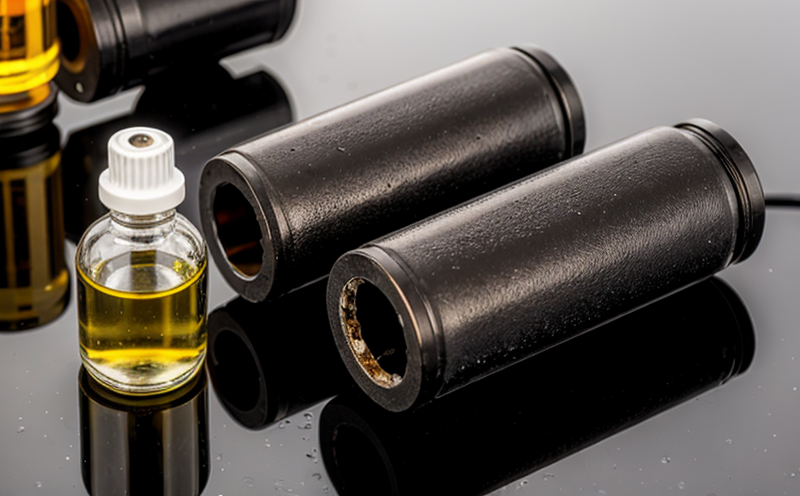ASTM D7679 Aliphatic Hydrocarbons GC FID Test in Water
The ASTM D7679 aliphatic hydrocarbons gas chromatography with flame ionization detection (GC-FID) test is a critical analytical method used to quantify the concentration of aliphatic hydrocarbon compounds present in water samples. This test is particularly important for assessing environmental contamination, especially in industrial and urban areas where petroleum products or other organic solvents may be released into the environment.
The ASTM D7679 standard provides detailed guidelines on how to collect, prepare, and analyze water samples using GC-FID technology. The aliphatic hydrocarbons targeted by this test include compounds such as n-hexane, n-heptane, and n-octane, among others. These hydrocarbons are key indicators of contamination from various sources including petroleum refineries, chemical plants, and urban runoff.
The GC-FID system is chosen for its high sensitivity and selectivity in identifying and quantifying aliphatic hydrocarbons. The process involves several steps: first, the water sample must be filtered to remove particulate matter that could interfere with the analysis. Then, a solvent extraction step extracts the target compounds from the water matrix into a suitable mobile phase. Finally, these compounds are injected into the GC-FID system where they are separated based on their volatility and detected by the FID detector.
The ASTM D7679 method specifies the use of a capillary column with polar stationary phases to enhance separation efficiency. The temperature program is carefully controlled to optimize the elution order of different aliphatic hydrocarbons. Data analysis typically involves comparing peak areas from the GC-FID output against calibration curves prepared beforehand.
The test results are reported in milligrams per liter (mg/L), providing a quantitative measure of aliphatic hydrocarbon contamination levels. This information is invaluable for environmental monitoring, compliance assessments, and decision-making related to pollution control measures.
In real-world applications, this test is often used by quality managers, compliance officers, R&D engineers, and procurement specialists in industries like petrochemicals, oil refining, and municipal water treatment facilities. It helps ensure that regulatory standards are met, supports research into contaminant sources, and aids in the development of more effective remediation strategies.
Why It Matters
The ASTM D7679 aliphatic hydrocarbons GC-FID test is crucial for several reasons. Firstly, it provides precise measurements of aliphatic hydrocarbon contamination levels in water, which is essential for environmental protection and public health. Contamination by these compounds can lead to soil and groundwater pollution, affecting ecosystems and human well-being.
Secondly, the results from this test are used extensively in regulatory compliance processes. Many industries are required by law to monitor and report on their discharge of pollutants into water bodies. The accurate data provided by ASTM D7679 ensures that these reporting requirements are met with high precision.
Thirdly, the information gained from this testing can drive improvements in industrial processes. By identifying specific hydrocarbon compounds present in wastewater, companies can pinpoint sources of contamination and implement targeted remediation strategies. This not only reduces environmental impact but also enhances operational efficiency by minimizing waste generation.
Why Choose This Test
- The ASTM D7679 method is highly sensitive and selective, allowing for accurate quantification of aliphatic hydrocarbons even at low concentrations.
- It adheres to internationally recognized standards, ensuring consistent and reliable results across different laboratories.
- The GC-FID technology provides rapid analysis times compared to other chromatographic methods.
- Data from this test can be used for both regulatory compliance and environmental impact assessments.
- The method is adaptable to various sample types, including surface water, groundwater, and wastewater.
- It offers a comprehensive overview of aliphatic hydrocarbon contamination, helping in the identification of potential sources and pathways of pollution.
By choosing ASTM D7679 for your testing needs, you ensure that your data is robust, reliable, and meets international standards. This can significantly enhance your reputation as a responsible and compliant entity in the eyes of regulators and stakeholders.
International Acceptance and Recognition
- The ASTM D7679 method has been widely adopted by regulatory bodies worldwide, including those in Europe (EN ISO), North America (ASTM), and Asia-Pacific regions. This ensures that the results are universally accepted.
- It is also recognized by organizations such as the United Nations Environment Programme (UNEP) for its role in environmental monitoring and assessment.
- The method's rigorous standards and protocols have been praised for their accuracy and repeatability, making it a preferred choice globally.
The widespread acceptance of ASTM D7679 underscores its importance in the field of water quality testing. Its international recognition ensures that your test results will be understood and respected across borders, facilitating seamless communication with regulatory authorities and international partners.





